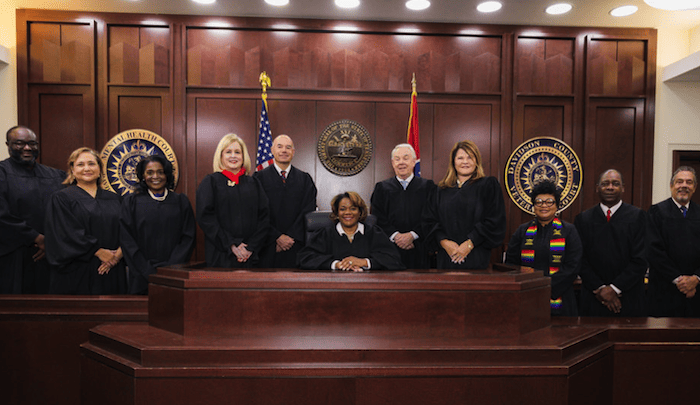Nepal: Stone-Pelting on Hindus During Ganesh Immersion by Muslim Group
- Mahamunimodi Team
- Sep 4
- 4 min read

In one of our earlier reports, we had drawn attention to the changing demographic landscape of Nepal, a small yet historically significant Himalayan nation in South Asia. Over the last decade, Nepal has witnessed a noticeable rise in its Muslim population, a shift that has paralleled a wave of Islamization. This has manifested in the rapid construction of mosques, the spread of largely unregulated madrasas, and the visible influence of radical ideologies. Alarmingly, international jihadist organizations such as the Islamic State (ISIS) and Jaish-e-Mohammed have also found the country’s porous borders and weak enforcement mechanisms advantageous, turning Nepal into a potential safe haven for extremist groups. Beyond geopolitics, however, the most unsettling outcome of these demographic and ideological shifts has been the increasing hostility directed towards Nepal’s Hindu majority—where attacks on Hindu festivals, idols, and processions are becoming distressingly frequent in a land that was once revered as a bastion of Hindu culture.
The latest example of this trend occurred on August 30, 2025, during a Ganesh idol immersion procession in Janakpurdham, the administrative capital of Nepal’s Madhesh Province. The procession, part of Ganesh Chaturthi festivities, was moving towards the Kashibhui pond when it reached Jhanda Chowk in Ward 20, an area dominated by Muslims. According to eyewitness accounts, members of the Muslim community attempted to block the route and stop the march. This sparked heated arguments, which soon escalated into open violence. The most provocative act came when stones were hurled at the idol of Lord Ganesh, a move that ignited clashes between the two communities. Police forces rushed to the scene, deploying tear gas shells in an effort to disperse the crowd and prevent the violence from spiraling further.
Dhanusha Police Deputy Superintendent Bahadur Singh confirmed that at least two individuals were injured in the clashes. In the aftermath, the state mobilized a large security presence—around 200 police and armed personnel—who were stationed not only across Janakpurdham but also on key connecting routes to Devpura-Rupaitha and Jatahi to contain potential flare-ups. While order was eventually restored, local residents voiced a troubling concern: that such confrontations during Hindu festivals were no longer isolated events but part of a recurring pattern. Earlier, similar tensions had marred Durga idol immersions, and now they were increasingly spreading to other processions, such as Ganesh Chaturthi, signaling that communal flashpoints were becoming a grim feature of the festival calendar.
What makes this particular incident stand out is its location and symbolism. Janakpurdham is not just any city—it is a cultural hub tied deeply to Hindu tradition, revered as the land of Goddess Sita, and the spiritual heart of the Madhesh region. For violence to erupt here during a Ganesh immersion is a deeply unsettling reminder of how fragile communal harmony has become. The symbolic nature of Ganesh Chaturthi as a festival of joy and unity only sharpens the sense of violation caused by the attack, which was marked not only by verbal hostilities but also by physical assaults on the idol, injuries to devotees, and heavy-handed law enforcement interventions.
Unfortunately, this incident is far from unique. Over the last several years, Nepal has seen an escalating series of attacks on Hindu religious gatherings. For instance, in April 2025, Birgunj in Parsa district witnessed one of the most serious flare-ups when a Hanuman Jayanti procession was targeted. Stones were pelted at devotees near Shreeram Hall Chowk in Chapkaiya-3, vehicles were set ablaze, and several people, including police officers, were injured. The violence forced the imposition of a strict curfew in central Birgunj, lasting several days, until peace talks with local leaders produced a temporary truce.
Similarly, in September 2020, Malangawa in Sarlahi district became the site of another communal clash during Bishwakarma idol immersion. Hindus insisted on taking their traditional route to the pond, which coincided with a path regularly used by Muslims on Fridays. Objections from the Muslim community quickly escalated into violence, leaving more than a dozen seriously injured. Police were compelled to intervene with force to re-establish order.
Even earlier, in October 2018, Krishnanagar in Kapilvastu district saw stone-pelting and attacks on a Durga immersion procession near a mosque, with Muslims reportedly hurling stones from rooftops. Once again, curfews had to be reimposed, and festivities were cut short under an atmosphere of fear. These recurring disruptions show a disturbing continuity: Hindu processions—whether for Hanuman Jayanti, Durga Puja, or Bishwakarma Puja—are increasingly becoming flashpoints for communal violence, particularly in Muslim-dominated neighborhoods.
The cumulative effect of these incidents points to an unresolved and deepening fault line in Nepalese society. While authorities have often reacted with curfews, security clampdowns, and peace talks, the repetition of violence during Hindu festivals demonstrates that the root causes remain unaddressed. Unless meaningful steps are taken—through stricter regulation of radical activities, genuine inter-community dialogue, and protection of Hindu religious freedoms—these tensions risk becoming institutionalized, erupting with every major festival.
The Janakpurdham violence, therefore, is not just an isolated outbreak but part of a growing pattern that threatens the very fabric of Nepal’s plural identity. While police intervention temporarily restored calm, the episode underscores the need for urgent preventive measures and long-term conflict resolution strategies. If neglected, Nepal risks seeing its religious festivals—once celebrated as occasions of cultural unity—transformed into battlegrounds of division.



Comments